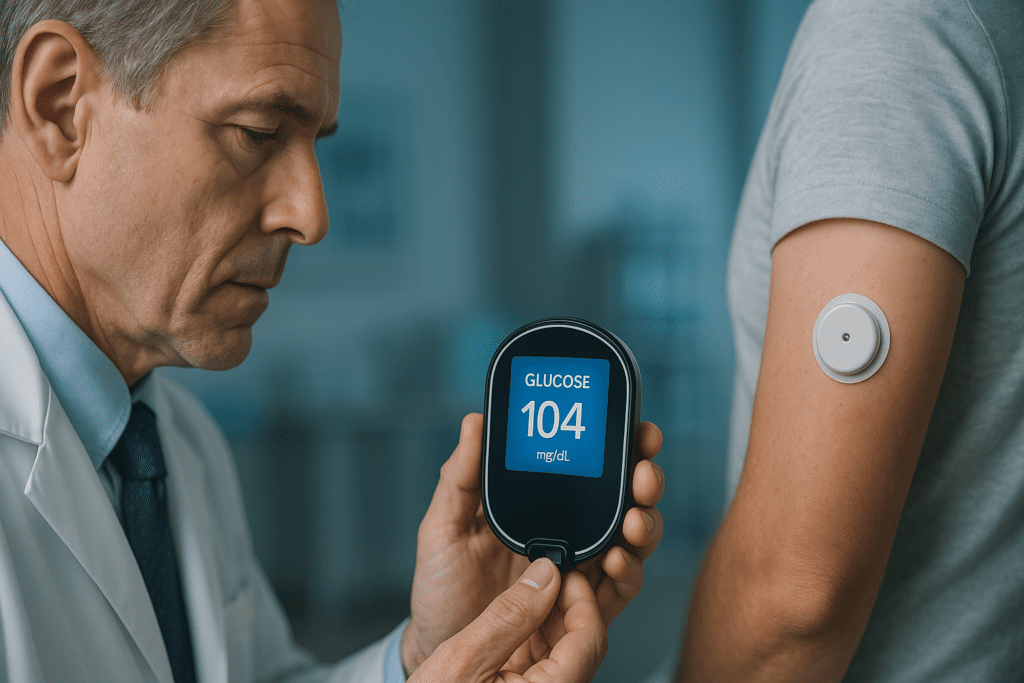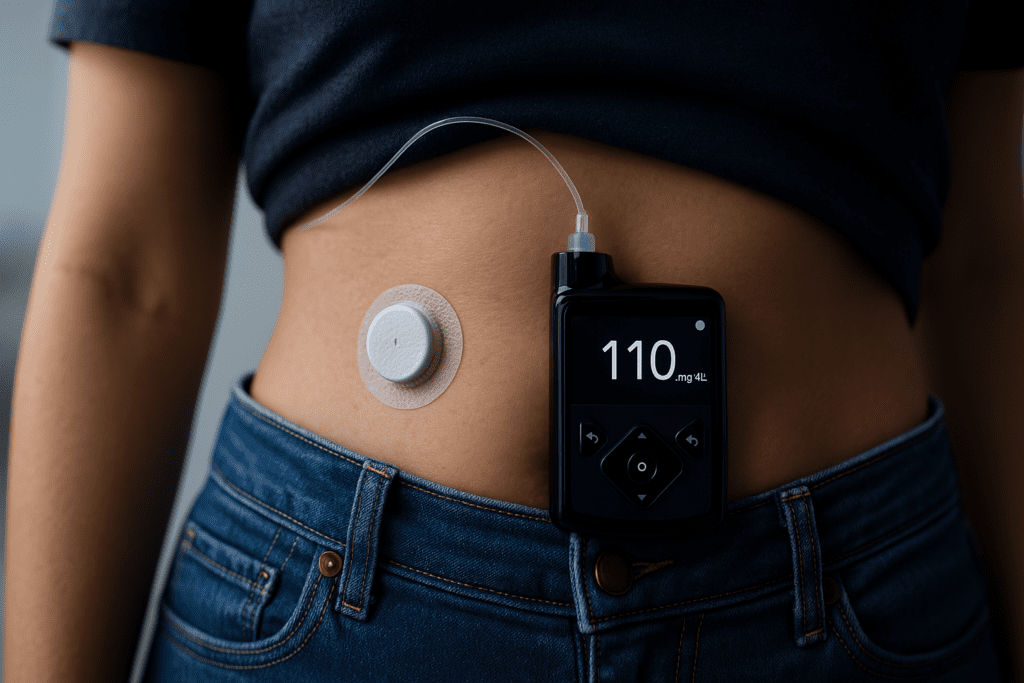Introduction: The Shifting Landscape of Type 1 Diabetes Care
Type 1 diabetes mellitus (T1DM), once considered a condition managed primarily through insulin therapy and strict lifestyle control, is undergoing a transformation driven by scientific innovation and clinical breakthroughs. While insulin remains a central component of treatment, the emergence of new interventions—from immunotherapies and beta-cell regeneration to novel type 1 diabetes drugs—signals a paradigm shift in how researchers and clinicians envision the future of care. These emerging strategies are not only enhancing glycemic control but also addressing the autoimmune mechanisms at the heart of the disease. As patients and providers alike seek more personalized and sustainable solutions, the question is no longer merely how to treat juvenile diabetes but how to modify its course, delay its onset, or potentially reverse its pathology.
You may also like: Breakthroughs in Current Diabetes Research: What the Latest Studies Reveal About Treatment and Prevention
In this comprehensive overview, we explore the latest progress in type 1 diabetes therapy, focusing on investigational treatments, evolving drug classes, and the translational science that bridges laboratory discovery with clinical application. We also examine the broader implications for T1DM management, considering how each new approach fits into the complex tapestry of modern diabetes care. By aligning these advancements with medically recognized practices and grounded scientific data, this article aims to offer clarity, accuracy, and meaningful insights for those seeking the best medicine for diabetes type 1 in today’s ever-advancing healthcare environment.
Understanding the Immune Origins of Type 1 Diabetes
To fully grasp the innovation behind emerging treatments, it’s essential to revisit the root cause of type 1 diabetes. Unlike type 2 diabetes, which is largely influenced by insulin resistance, T1DM arises from an autoimmune attack on the pancreatic beta cells responsible for insulin production. This immune-mediated destruction, often initiated in childhood or adolescence, results in lifelong insulin dependence. However, this pathophysiology also opens doors for targeted immunotherapies and disease-modifying interventions that go beyond symptom management.
Researchers have identified specific genetic markers and immune pathways implicated in the onset of type 1 diabetes. Human leukocyte antigen (HLA) genotypes, for example, are strongly associated with disease susceptibility, while aberrant T-cell activity plays a key role in attacking islet cells. These insights have paved the way for precision medicine approaches that aim to suppress, delay, or even prevent the autoimmune cascade. In this context, the management of type 1 diabetes mellitus is evolving from reactive care to proactive intervention, fundamentally reshaping how scientists approach the disease.

Immunotherapy: Changing the Course of Autoimmunity
Among the most promising frontiers in type 1 diabetes therapy is the field of immunomodulation. Several therapies under investigation aim to recalibrate the immune system, halting the autoimmune destruction of beta cells before irreversible damage occurs. Teplizumab, a monoclonal antibody targeting CD3-positive T cells, has demonstrated potential to delay the onset of T1DM in high-risk individuals. Its FDA approval marks a critical milestone in the effort to treat type 1 diabetes at its immunological roots.
Other immunotherapeutic agents, such as anti-thymocyte globulin (ATG) and low-dose interleukin-2 (IL-2), are also being evaluated for their capacity to induce immune tolerance and preserve residual beta-cell function. These therapies represent a shift in how we conceptualize type 1 diabetes drugs—not merely as glucose-lowering agents, but as immune system modulators with disease-modifying potential. While long-term efficacy and safety remain under evaluation, the implications for T1DM management are profound. These developments suggest a future where remedies for type 1 diabetes might include interventions capable of altering the natural course of the condition rather than simply managing its symptoms.
Beta-Cell Regeneration and Stem Cell Therapy
Another groundbreaking area of research in type 1 diabetes therapy focuses on restoring the body’s ability to produce insulin through beta-cell regeneration or replacement. Scientists have made notable progress in generating insulin-producing cells from stem cells, which can then be transplanted into patients to re-establish endogenous insulin production. Vertex Pharmaceuticals, for instance, has developed VX-880, an investigational stem cell-derived therapy that has shown early promise in clinical trials.
While challenges remain—particularly in avoiding immune rejection of transplanted cells—encapsulation technologies are being developed to shield these new cells from autoimmune attack. If successful, this strategy could provide a functional cure for patients, transforming the landscape of type 1 diabetes medication. For many individuals searching for the best medicine for diabetes type 1, these regenerative approaches represent hope for a future with fewer daily injections and improved metabolic control.
The possibility of regenerating or replacing beta cells also underscores the evolving definition of what constitutes effective meds for type 1 diabetes. No longer limited to exogenous insulin or glucose-lowering agents, the therapeutic arsenal is expanding to include cell-based interventions aimed at restoring physiological insulin dynamics.
Adjunctive Therapies: Enhancing Outcomes Beyond Insulin
Although insulin remains the cornerstone of T1DM care, researchers are increasingly exploring adjunctive therapies that support better metabolic control and reduce the burden of disease management. Sodium-glucose co-transporter 2 (SGLT2) inhibitors, traditionally used in type 2 diabetes, have gained attention for their glucose-lowering effects in T1DM patients. These drugs work by promoting urinary glucose excretion, helping to lower blood sugar levels independently of insulin.
However, SGLT2 inhibitors carry risks, particularly diabetic ketoacidosis (DKA), and must be used cautiously in type 1 diabetes. Still, their potential to reduce insulin requirements and improve time-in-range metrics makes them a noteworthy addition to the evolving portfolio of type 1 diabetes drugs. Metformin, GLP-1 receptor agonists, and other agents are also being studied as add-on therapies that may enhance insulin sensitivity or modulate appetite and weight—key considerations in comprehensive T1DM management.
By broadening the definition of what constitutes effective type 1 diabetes pills or medications, these therapies offer patients additional tools to fine-tune their glycemic control. Moreover, they contribute to a more individualized approach to care, tailoring treatments to each patient’s unique physiology and lifestyle.

Artificial Pancreas Systems and Closed-Loop Technologies
Perhaps one of the most transformative advances in the management of type 1 diabetes mellitus has come not from pharmaceuticals but from bioengineering. The advent of artificial pancreas systems—automated insulin delivery technologies that integrate continuous glucose monitors (CGMs) with insulin pumps—has revolutionized how patients manage their disease on a daily basis. These closed-loop systems can adjust insulin delivery in real time based on glucose readings, significantly reducing the risk of hypoglycemia and improving overall glycemic stability.
Companies like Medtronic, Tandem, and Insulet have introduced hybrid closed-loop systems that learn and adapt to user patterns. While not a replacement for insulin therapy, these technologies act as sophisticated delivery mechanisms that reduce user burden and optimize control. As these systems become more refined and accessible, they are quickly becoming integral to the conversation around the best medicine for diabetes type 1—not as chemical compounds, but as intelligent tools that enhance therapeutic outcomes.
In parallel, research into dual-hormone systems that deliver both insulin and glucagon is also gaining momentum, offering even tighter glycemic control and mimicking the body’s natural responses more closely. Such innovations underscore the multifaceted nature of modern T1DM management, where digital tools and pharmacological therapies work in tandem to support better health outcomes.
Preventive Strategies and Early Interventions
Another crucial dimension in the evolution of type 1 diabetes therapy is the emphasis on prevention and early diagnosis. Screening programs that identify individuals at genetic or immunological risk for T1DM are becoming more common, enabling clinicians to intervene before the onset of clinical symptoms. Trials such as TrialNet and The Environmental Determinants of Diabetes in the Young (TEDDY) are expanding our understanding of early markers and environmental triggers.
Preventive interventions are not limited to immunotherapy alone. Lifestyle guidance, stress management, and dietary recommendations tailored to at-risk individuals are being explored as supplementary remedies for type 1 diabetes in its earliest stages. This shift toward prevention aligns with a broader public health emphasis on mitigating disease before it develops, thereby reducing long-term complications and healthcare costs.
As we refine strategies for how to treat juvenile diabetes, the inclusion of preventive care represents a more holistic and forward-looking approach. Rather than waiting for clinical onset, these strategies empower patients and families to take proactive steps, potentially altering disease progression and delaying the need for intensive medical management.
Precision Medicine and the Future of Personalized Diabetes Care
The integration of genomics, biomarkers, and digital health tools is paving the way for precision medicine in the treatment of T1DM. By analyzing genetic predispositions and individual response patterns, clinicians can tailor interventions with greater accuracy. This is especially valuable in identifying which patients are most likely to benefit from specific type 1 diabetes medication regimens, immunotherapies, or adjunctive therapies.
Pharmacogenomics, for example, may reveal why some patients respond well to certain drugs while others do not. Likewise, machine learning algorithms applied to CGM data can detect subtle patterns that inform dosing strategies and behavioral recommendations. The result is a more nuanced and effective form of care—one that adapts to the individual rather than applying a one-size-fits-all model.
As these technologies mature, they will play a critical role in optimizing both existing and emerging type 1 diabetes pills and therapies. In doing so, they enhance our ability to deliver care that is not only evidence-based but also aligned with each patient’s biology and preferences.
Global Research Collaborations and Accelerated Clinical Trials
The rapid progress in type 1 diabetes therapy has been fueled, in part, by unprecedented levels of global collaboration. Academic institutions, pharmaceutical companies, and government agencies are increasingly partnering to accelerate clinical trials, share data, and harmonize research protocols. Initiatives like the Innovative Medicines Initiative (IMI) in Europe and the NIH’s Accelerating Medicines Partnership exemplify this cooperative spirit.
These efforts not only expedite the development of new meds for type 1 diabetes but also ensure that diverse populations are represented in clinical studies. This inclusivity is essential for understanding how treatments perform across different demographics, ultimately leading to more equitable and effective care.
Moreover, public-private partnerships have enabled the funding of high-risk, high-reward research that might otherwise go unsupported. As a result, breakthroughs in immunotherapy, regenerative medicine, and smart drug delivery are reaching patients more quickly, reinforcing the idea that the future of T1DM management is as much about collaboration as it is about innovation.

Frequently Asked Questions (FAQ): Emerging Advances in Type 1 Diabetes Therapy
1. Can type 1 diabetes therapy eventually eliminate the need for insulin?
While current type 1 diabetes therapy still relies heavily on insulin, researchers are actively investigating interventions that may reduce or even eliminate the dependency on it. For instance, regenerative medicine is advancing with stem cell therapies aimed at restoring insulin production naturally. These approaches offer an exciting alternative to traditional type 1 diabetes drugs, as they focus on the underlying autoimmune cause rather than simply treating symptoms. However, challenges remain, including immune rejection and the need for durable, long-term outcomes. Until these therapies are proven safe and scalable, insulin will remain central to the management of type 1 diabetes mellitus.
2. How does mental health intersect with long-term T1DM management?
Mental health is a critical, though often under-discussed, component of type 1 dm management. Managing a chronic illness like T1DM requires constant vigilance, which can lead to diabetes burnout, anxiety, and depression over time. Integrating psychological support into treatment plans is essential for achieving holistic care. Beyond the physical demands of taking type 1 diabetes medication or monitoring blood glucose, patients must also navigate emotional fatigue and fear of complications. Addressing these mental health factors can significantly improve adherence to prescribed meds for type 1 diabetes and enhance quality of life.
3. Are there any promising developments in type 1 diabetes pills that don’t involve injections?
The pursuit of oral therapies for T1DM is gaining momentum, although insulin itself cannot currently be administered effectively as a pill due to degradation in the digestive system. That said, several non-insulin type 1 diabetes pills are being developed as adjuncts, such as oral GLP-1 receptor agonists and immunomodulators. These could serve as supplemental remedies for type 1 diabetes by supporting glucose control or protecting beta cells. While not yet replacements for insulin, they may soon play a complementary role in type 1 diabetes therapy. Advances in nanotechnology and encapsulation are also driving research toward more effective oral delivery methods for insulin in the future.
4. What role does exercise play in improving the effectiveness of type 1 diabetes drugs?
Exercise has a profound effect on the body’s insulin sensitivity, making it a valuable complement to type 1 diabetes drugs. For patients undergoing type 1 diabetes therapy, regular physical activity can help improve glucose uptake, stabilize blood sugar levels, and reduce insulin requirements. This can enhance the effectiveness of both insulin and adjunctive medications, potentially decreasing the overall dosage needed. Moreover, exercise contributes to cardiovascular health, which is particularly important given the increased risk of heart disease among people with T1DM. However, it’s essential to closely monitor blood glucose to avoid hypoglycemia during and after exercise.
5. How are wearable technologies influencing the management of type 1 diabetes mellitus?
Wearable technologies are revolutionizing how clinicians and patients approach the management of type 1 diabetes mellitus. Continuous glucose monitors (CGMs), insulin pumps, and closed-loop systems now allow real-time monitoring and automated insulin delivery, minimizing human error and improving precision. These tools are not substitutes for type 1 diabetes medication but serve to enhance their performance by fine-tuning delivery based on dynamic needs. Furthermore, data collected from wearables can be used to personalize type 1 dm management, allowing adjustments in therapy that better reflect a patient’s lifestyle. Over time, these technologies are shifting the focus from reactive care to proactive intervention.
6. What are some unconventional remedies for type 1 diabetes that are being studied?
While there is no proven natural cure for T1DM, researchers are exploring several unconventional remedies for type 1 diabetes. For example, certain gut microbiome-modulating therapies are under investigation for their potential to influence immune system behavior and glucose metabolism. Anti-inflammatory diets, intermittent fasting under medical supervision, and stress reduction techniques are also being studied as complementary approaches. Though none of these replace established type 1 diabetes drugs, they may augment treatment plans and reduce the burden of disease. As always, such remedies should be considered with professional guidance to avoid compromising core therapies like insulin.
7. How is pediatric care evolving in terms of how to treat juvenile diabetes?
Pediatric endocrinology has made substantial strides in redefining how to treat juvenile diabetes. Early screening and predictive genetic testing are now helping identify children at risk before symptoms emerge, allowing for preemptive intervention. In addition to standard type 1 diabetes medication, children are benefiting from child-friendly insulin pump designs, age-appropriate education, and caregiver-focused training. Moreover, many clinical trials for new type 1 diabetes therapy options now include younger populations, ensuring that innovation is accessible across age groups. These changes are not only improving safety and efficacy but also reducing the psychological stress associated with early diagnosis.
8. Is there a difference between the best medicine for diabetes type 1 in adults versus children?
Yes, the best medicine for diabetes type 1 can vary depending on the patient’s age, physiology, and developmental needs. While insulin remains the cornerstone for both populations, dosing regimens, delivery methods, and adjunctive therapies often differ. Children may benefit from newer basal insulins with more stable profiles, while adults might tolerate certain type 1 diabetes pills or immunotherapies better. Additionally, pediatric patients often need additional behavioral support and flexibility in treatment plans to account for growth spurts and unpredictable routines. Tailoring the type 1 diabetes medication regimen to suit these individual factors is key to effective, long-term disease control.
9. What ethical considerations surround the development of new type 1 diabetes drugs?
The rapid pace of innovation in type 1 diabetes drugs brings with it important ethical questions, particularly regarding access, cost, and clinical trial inclusivity. Many of the most advanced therapies remain prohibitively expensive, raising concerns about equity in T1DM management. Additionally, the inclusion of diverse racial, ethnic, and socioeconomic populations in clinical research is essential to ensure that new treatments are universally applicable. Another concern lies in the use of gene editing or stem cell technologies, which require strict ethical oversight. Balancing innovation with equity and safety is a necessary part of advancing type 1 diabetes therapy responsibly.
10. How can caregivers play a more active role in type 1 dm management?
Caregivers, whether parents, partners, or professionals, are central to effective type 1 dm management. Beyond assisting with medication adherence, caregivers can help monitor symptoms, respond to emergencies, and provide critical emotional support. Training programs are now being developed to better equip caregivers with the knowledge needed to understand type 1 diabetes drugs, interpret glucose trends, and use diabetes technology effectively. Engaging caregivers in shared decision-making also improves patient autonomy and outcomes, especially in pediatric and geriatric populations. Their involvement can make a significant difference in maintaining consistency across all aspects of T1DM care, from managing insulin schedules to recognizing signs of hypo- or hyperglycemia.
Conclusion: Redefining the Possibilities in Type 1 Diabetes Therapy
As scientific discovery continues to reshape our understanding of type 1 diabetes, the therapeutic landscape is becoming more diverse, dynamic, and promising than ever before. From the development of immune-modulating agents and regenerative cell therapies to the integration of digital tools and preventive care, the definition of what constitutes effective treatment is rapidly expanding. No longer confined to insulin alone, type 1 diabetes therapy now encompasses a multifaceted approach that targets the root cause of the disease while supporting better daily management.
This evolution reflects a broader shift in healthcare toward personalized, proactive, and precision-based medicine. For patients and clinicians alike, these advances offer a renewed sense of hope—and a future in which type 1 diabetes drugs are not just reactive treatments, but strategic instruments of transformation. Whether through early intervention, innovative devices, or the best medicine for diabetes type 1 tailored to genetic profiles, the potential for meaningful change has never been greater.
Ultimately, the management of type 1 diabetes mellitus is no longer a static protocol but a dynamic, evolving journey. With each breakthrough, we move closer to a world where the burden of disease is lighter, outcomes are more predictable, and the path forward is illuminated by the combined light of research, technology, and human resilience.
autoimmune diabetes research, stem cell treatment for diabetes, glucose monitoring technology, artificial pancreas system, closed-loop insulin delivery, immunotherapy for diabetes, pediatric diabetes management, precision medicine in endocrinology, continuous glucose monitors, beta-cell regeneration, diabetes tech innovations, insulin pump advancements, CGM integration, diabetes digital health tools, endocrinology breakthroughs, wearable medical devices, personalized diabetes care, glucose control strategies, diabetes and mental health, chronic disease innovation
Further Reading:
Innovative immunotherapies and emerging treatments in type 1 diabetes management
Type 1 Diabetes Cure: Current Research (2024)
Disclaimer
The information contained in this article is provided for general informational purposes only and is not intended to serve as medical, legal, or professional advice. While MedNewsPedia strives to present accurate, up-to-date, and reliable content, no warranty or guarantee, expressed or implied, is made regarding the completeness, accuracy, or adequacy of the information provided. Readers are strongly advised to seek the guidance of a qualified healthcare provider or other relevant professionals before acting on any information contained in this article. MedNewsPedia, its authors, editors, and contributors expressly disclaim any liability for any damages, losses, or consequences arising directly or indirectly from the use, interpretation, or reliance on any information presented herein. The views and opinions expressed in this article are those of the author(s) and do not necessarily reflect the official policies or positions of MedNewsPedia.


